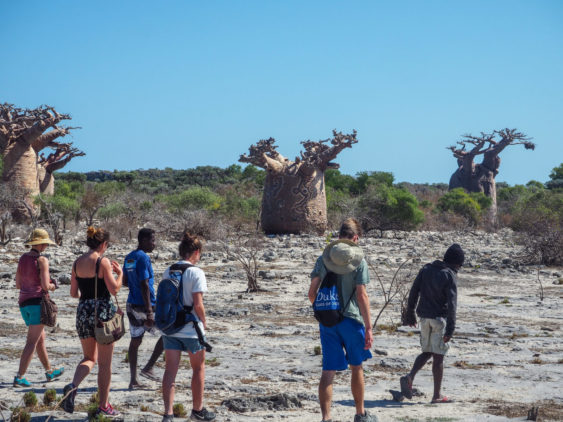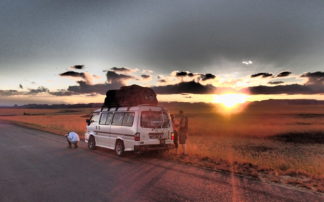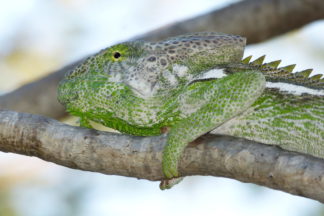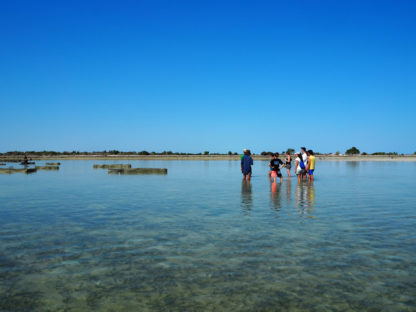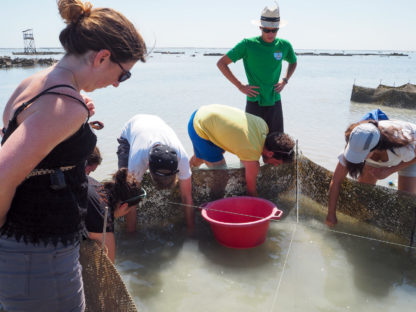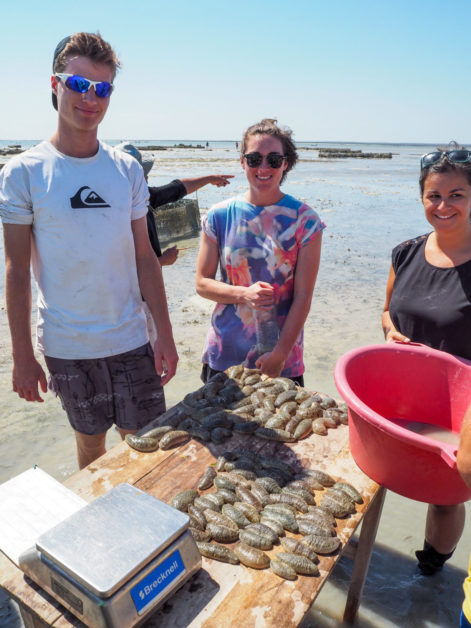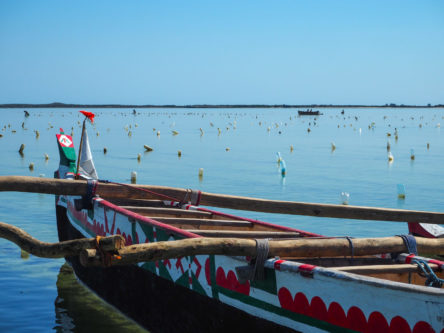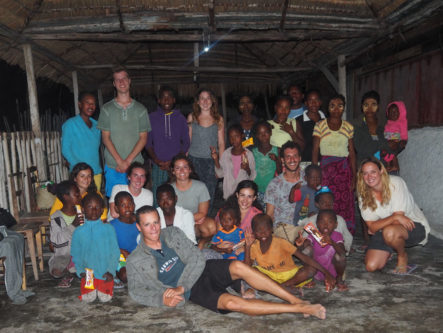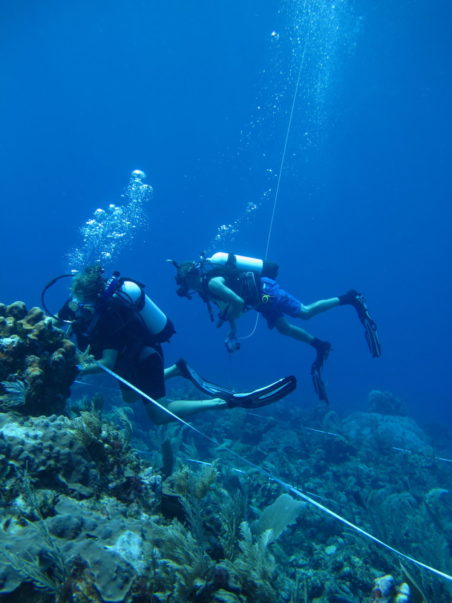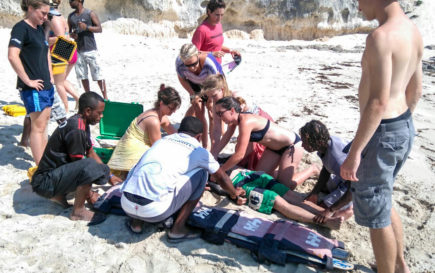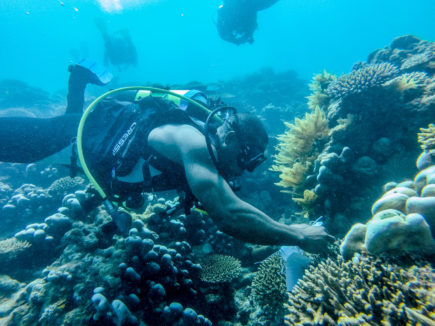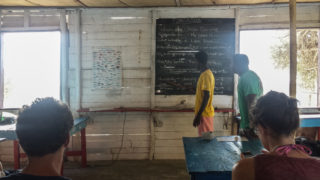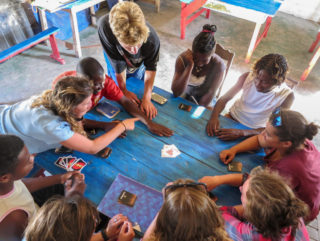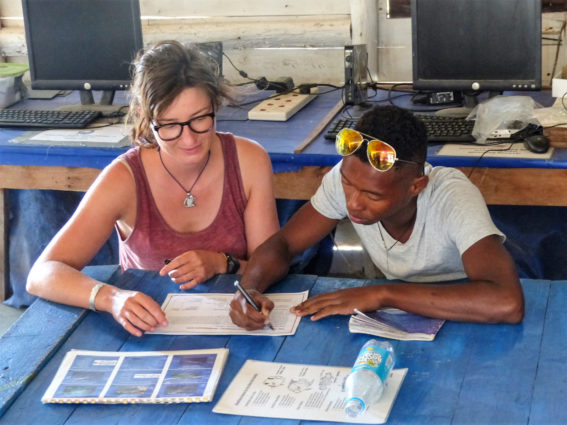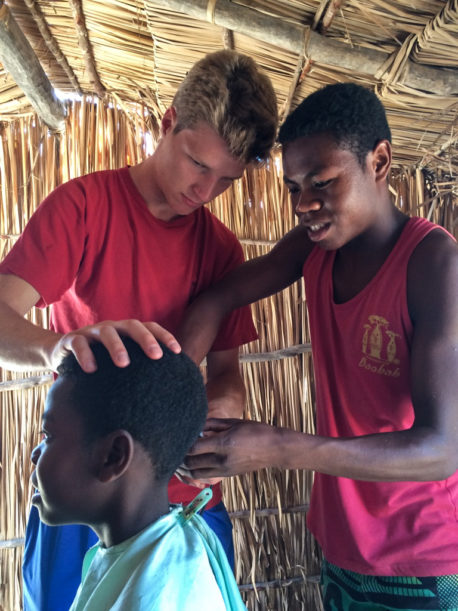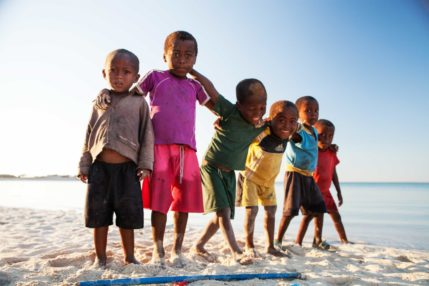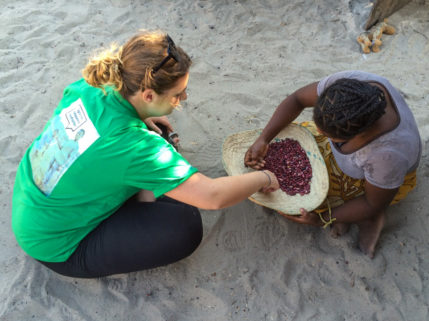As an 18 year old student growing up in a small suburban town in the United States, my experience of the world beyond the picket fences and carefully trimmed lawns of my childhood home was pretty limited. There were few immigrants, almost no foreign culture, and I was poorly travelled, as one might expect given that I grew up 1500km from the nearest border. In fact, at the time of my high school graduation, I had only left North America once, and I had never been away from home for more than two weeks. Therefore, the decision to drop everything and go on a Blue Ventures marine conservation expedition to Madagascar was not made without a good deal of thought and planning. I didn’t know it then, but it was one of the best decisions I have ever made.
I believe that we only grow as people when we leave behind the familiar, when we’re shocked out of our former selves by the chaotic pulse of the wider world. There is no better way to describe my first days in Madagascar than shocking- the most wonderful kind of shocking imaginable.
My expedition began with an (optional) overland tour, which lasts three days and runs from Antananarivo to Toliara. The rugged highlands, the red tint of the African soil, the sight of unfamiliar plants and animals that can be found nowhere else on earth, and the language and customs of the Malagasy people were all totally new and fascinating to me. During the tour, we stayed in Ambositra and Fianarantsoa (two large Malagasy towns), visited several national parks, and got to see a ton of the countryside. I highly recommend it to any future volunteers, both because it’s a great way to see the country and because the alternative – an Air Madagascar flight to Toliara – is notoriously unreliable and just as expensive. Once we arrived in Toliara, we met the volunteers from the previous expedition and were able to ask them some questions about their experience. Then the following morning we left for the small fishing village of Andavadoaka (often shortened to Andava), where Blue Ventures’ marine conservation expeditions are based.
Though it’s only 175 kilometers from Toliara, the car ride to Andava is more than eight hours long, and is a bit of an adventure in itself! The road is not maintained by the government more than 20 kilometers outside of Toliara, and deteriorates rapidly into a dirt and sand path kept clear of vegetation only by the continuous beat of tire and wheel upon the bare earth. The journey was lengthened by a couple of breakdowns, but after 10 hours we finally arrived. The village is large for rural Madagascar (about 1500 people) and poor, although less so than most other villages in Southwest Madagascar, partially due to the presence of Blue Ventures who have initiated a series of alternative livelihoods strategies in the region. They also contributed to the creation of the Velondriake Association, a governing body made up of 32 local villages that sustainably manages fishing practices in the area.
We spent our first couple of days getting to grips with daily life in Andava, before leaving for a three day trip to Tampolove, a small village of about 500 people, 15km to the south. We got up early on our first morning in Tampolove to visit a sea cucumber farm, set up as part of Blue Ventures’ aquaculture programme to provide the villagers with an alternate source of income to extractive fishing. The farm was a vast series of pens splayed out across a large mudflat that lay just below the low tide mark. The sea cucumbers grow for 8 months in the pens, and are then harvested and exported to China, where they are regarded as a delicacy and a key ingredient in traditional medicine.
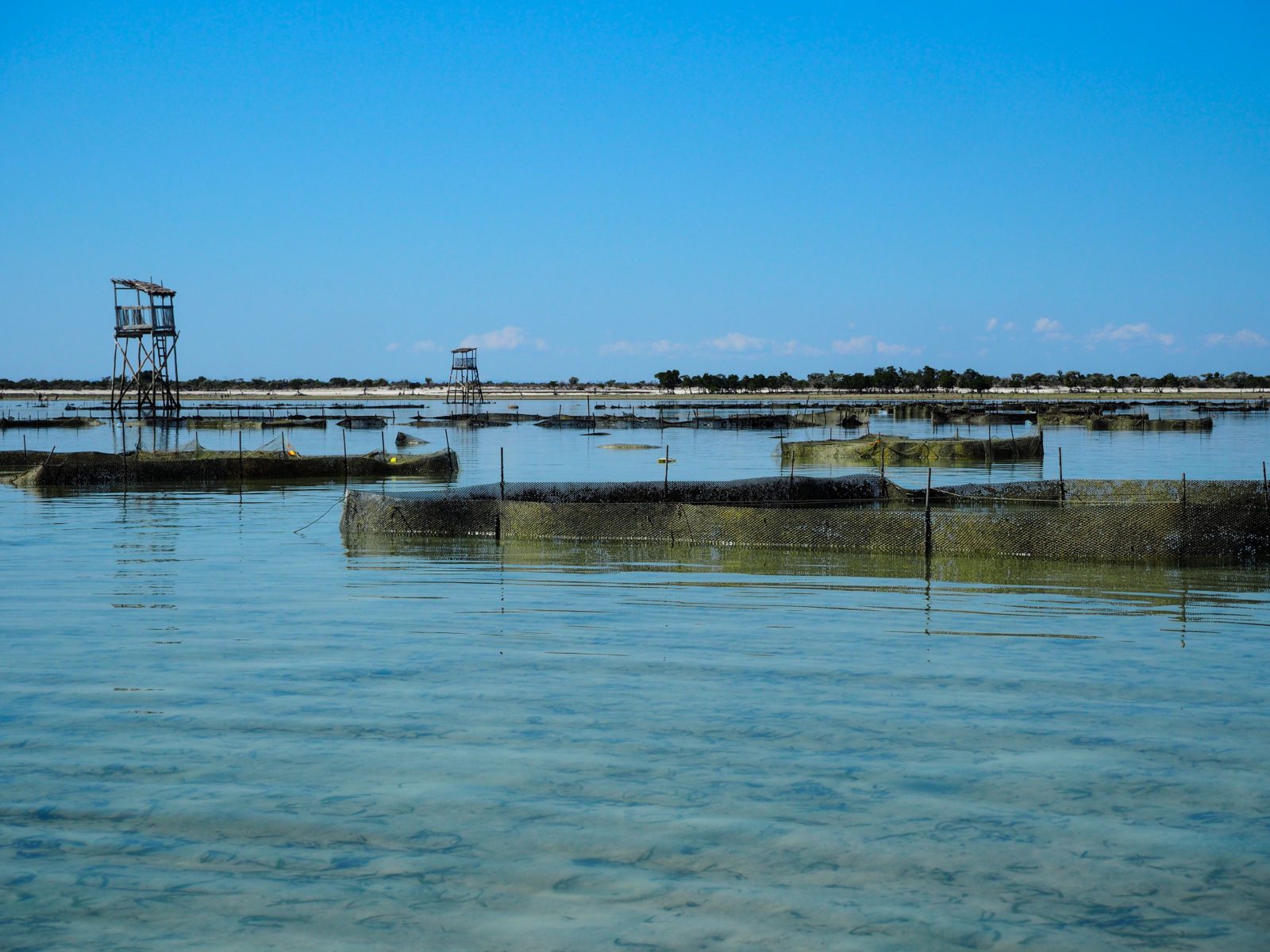
The sea cucumber pens of Tampolove | Photo: Myriam Hemsteede
Seaweed is also farmed in Tampolove, before being exported to cosmetics and pharmaceutical industries in western countries. It’s been estimated that seaweed farming provides each villager involved with an extra 12000 Ariary (4$) every month, and sea cucumbers, an extra 72000 (24$). It may not sound like much, but in a country where the average daily wage is 1$, this can have a substantial impact on daily life, especially because most of the farming is done by the women of the village, who would otherwise have to rely solely on their husbands for income.
After our Tampolove visit we returned to Andava to begin diving. The Toliara barrier reef is one of the largest coral reef systems in the Indian Ocean, and is perhaps the least dived of its size due to its extreme isolation. The size, quantity, and variety of marine life here defy description. I learned in school that coral reefs are the only ecosystem on earth that can rival or exceed the biodiversity of tropical rainforests. I do not find this hard to believe after diving Toliara reef! We dived twice a day, five days a week, for the duration of the expedition. We did surveys of fish and coral diversity, fish biomass, coral bleaching, and coral recruitment. The biodiversity of life we recorded during these dives was incredible. In addition to the scientific diving, I also had the opportunity to complete my PADI Advanced Open Water, Emergency First Responder, and Rescue Diver courses.
“The simple ambition to live a happy life belongs to no nation and no culture. It’s in all of us.”
When we weren’t in the water, much of the time was spent participating in cultural exchanges with people from the village. They taught us Malagasy, and we helped them with their English. We shared stories of our families, homes, and cultures, and they shared their stories with us. It’s strange, before coming to Madagascar I was most looking forward to the diving, but looking back on the expedition, the cultural exchanges are what had the strongest impact on me. There are several moments that I will remember forever. The first time I taught English was one of those moments. It was my second week in Andava, and I was teaching an intermediate level student (one who already knew basic English). He was 20 years old, had just graduated high school, and hoped to go on to university and study marine biology so that he could work for Blue Ventures and earn a good living to provide for his family. He likes football (or as we Americans call it: soccer), and his favourite musician was Wiz Khalifa. His passion for learning, his love of marine biology, and his taste in music and sports, struck me, not because of how exotic and foreign they were, but how I could have had the exact same conversation with any one of my friends back home, and it wouldn’t have been strange at all. The simple ambition to live a happy life belongs to no nation and no culture. It’s in all of us. It belongs to all of us. It’s something we all have in common no matter where we come from or who we are.
Just as memorable as the first time I taught English was my homestay with a local family. The other volunteers and I divided into pairs and spent all day (dinner one night, and then breakfast and lunch the next day) with a family from Andava. In contrast to the English/Malagasy lessons, which I found fun and interesting from the start, our homestay was initially more challenging. The language barrier meant that communication between us and the adults of the family was a struggle, but this didn’t stop us from engaging with the children. We coloured with them, and showed them pictures of our homes while they showed us their toys. I spent well over half an hour playing Beatles songs to them for us all to sing and dance to. I even gave a few of them haircuts, as the family we stayed with runs a barbershop!
We didn’t have to speak their language or know their customs for them to include us; they just did. This experience made me think that the walls that divide us grow and age as we do. Children haven’t had the time to develop those walls; they move effortlessly across cultural and linguistic divides that are seemingly impassible to everyone else. The minute I put on the first Beatles song – She Loves You – they started dancing and singing, despite never having heard of the Beatles. Even the initially distant adults loved the music. Several of them came over and started listening when I put it on, and I saw a few others listening from nearby houses. Smiles were on all of the faces within earshot of my phone’s speakers. There are some things so fundamentally and universally human that they cut through every wall we’ve built, and every line we’ve drawn between “us” and “them”. Music is one of those things, and children are too.
Once you’ve experienced moments of shared humanity with people on the other side of the world, the inequalities become much harder to ignore. Spending time with Malagasy people has made me understand in a whole new way why taking a holistic and integrated approach to conservation is the only way it can work in the long term. Matching fisheries management with community health, aquaculture and ecotourism all link to build more resilient livelihoods and a healthier marine environment.
Join us, and discover Blue Ventures’ marine conservation expeditions for yourself!
That’s the difference, I think, between being a tourist and a traveller. Tourists quickly pass through, taking home selfies and souvenirs. Travellers immerse themselves in the experience, taking home new perspectives and a different understanding. My 6 weeks with Blue Ventures gave me the opportunity to be a traveller for the first time in my life, and I’d recommend the experience to anyone.


